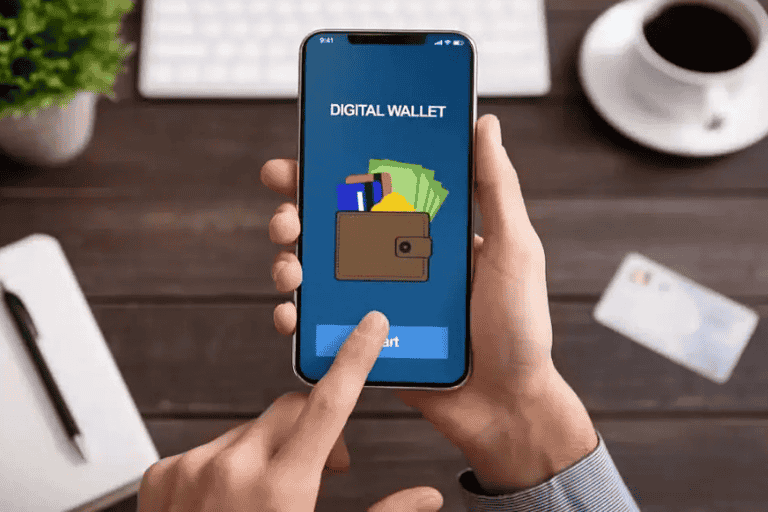Introduction
Pakistan is entering a pivotal era with the launch of the Digital Wallet System (2025), marking a major step in the nation’s broader strategy for the Pakistan Cashless Revolution. Under the stewardship of Prime Minister Shehbaz Sharif the government announced this ambitious programme with a Rs 3.5 billion subsidy to promote QR-based digital payments across the country. The goal is clear: move millions of Pakistanis away from cash-dependent transactions and into a traceable, inclusive digital payments ecosystem that supports everything from street-vendor purchases to large business payments and welfare disbursements.
Why Pakistan Needed the Shift
Pakistan has historically had a high reliance on physical cash. At one point, estimates suggested that over 27 % of the money supply was circulating in physical currency rather than through formal banking channels. That means a large portion of economic activity remained outside formal oversight—limiting tax collection, increasing the informal sector, and reducing financial inclusion. With the Digital Wallet System (2025) and the Cashless Pakistan agenda, policy-makers aim to document and formalize more of these transactions, enabling better governance and economic growth.
What the Digital Wallet System (2025) Entails
The system is designed to empower citizens, merchants and government agencies. At the user level, individuals link mobile wallets or bank-accounts via QR codes and CNIC (national identity) verification, enabling person-to-merchant (P2M), peer-to-peer (P2P) and government-to-person (G2P) payments. For merchants, onboarding includes QR-code acceptance and settlement via the instant payment infrastructure Raast developed by State Bank of Pakistan (SBP). Government payments such as welfare disbursements, pensions or subsidies will also flow through these wallets, reducing manual handling and opportunities for leakage.
Strategic Targets and the Cashless Pakistan Vision
As part of the Pakistan Cashless Revolution, the government has set ambitious targets. These include increasing active digital merchants to 2 million by FY2025-26, raising mobile/internet banking users from about 95 million to 120 million, and doubling digital payment transactions to around 15 billion annually. On the infrastructure front, a high-level committee is overseeing this roll-out, and major resources have been directed toward strengthening digital rails and oversight mechanisms.
Early Progress and Industry Dynamics
Digital wallets in Pakistan have already seen strong adoption. Leading providers such as Easypaisa (18 million monthly users) and JazzCash (21 million monthly users) are powering the consumer side of the transition. These platforms now offer more than just payments—they provide nano-loans, savings, insurance and other fintech services. The combination of formal banking, branchless banking and mobile wallet growth provides a strong base for the full-scale transition envisioned in the Digital Wallet System (2025).
Benefits to Citizens and the Economy
The shift brings multiple benefits:
- Transparency: Digital payments reduce undocumented cash flows and improve tax-compliance.
- Inclusion: Unbanked populations—especially in rural areas and among women—gain access to formal financial services.
- Efficiency: Faster digital transactions reduce cash-handling costs and settlement delays.
- Business Growth: SMEs and merchants gain access to digital channels, creating new opportunities.
- Security: Reduced risk of theft, fraud or counterfeit cash.
These outcomes support the broader Pakistan Cashless Revolution by building a modern payments infrastructure and enhancing economic participation.
Implementation Challenges
Despite the optimism, several challenges exist:
- Digital literacy & access: Many citizens still lack smartphones or internet access, particularly in remote regions.
- Infrastructure reliability: Connectivity, agent networks and logistic support must scale rapidly.
- Trust & behaviour change: Moving from cash to digital requires cultural and behavioural shifts among merchants and consumers.
- Regulation & oversight: Protecting data privacy and preventing financial crime is crucial as transactions go digital.
- Coordination: Multi-agency coordination and consistent monitoring remain vital for success.
Road-map and Outlook
Roll-out plans indicate phased expansion: early welfare disbursements and social protection payments, followed by wider merchant-acceptance and SME onboarding. Government documents show alignment with unified national frameworks and provincial integration by 2025. By end-2025, experts expect a significant shift of domestic payments into digital channels. The goal is that the Pakistan Cashless Revolution will not just be about payments—but about shifting how economic interaction occurs across the country.
Conclusion
The Digital Wallet System (2025) is much more than a payment tool—it is a foundational component of the Pakistan Cashless Revolution. With strong policy backing, expanding fintech infrastructure, and early successes in wallet adoption, Pakistan appears poised to accelerate its digital transformation. If the planned targets are met and key challenges addressed, millions of citizens, merchants and public-sector agencies will benefit from a more inclusive, efficient and transparent financial system. The era of cash is not ending overnight—but the groundwork for a truly digital economy is now firmly underway.

